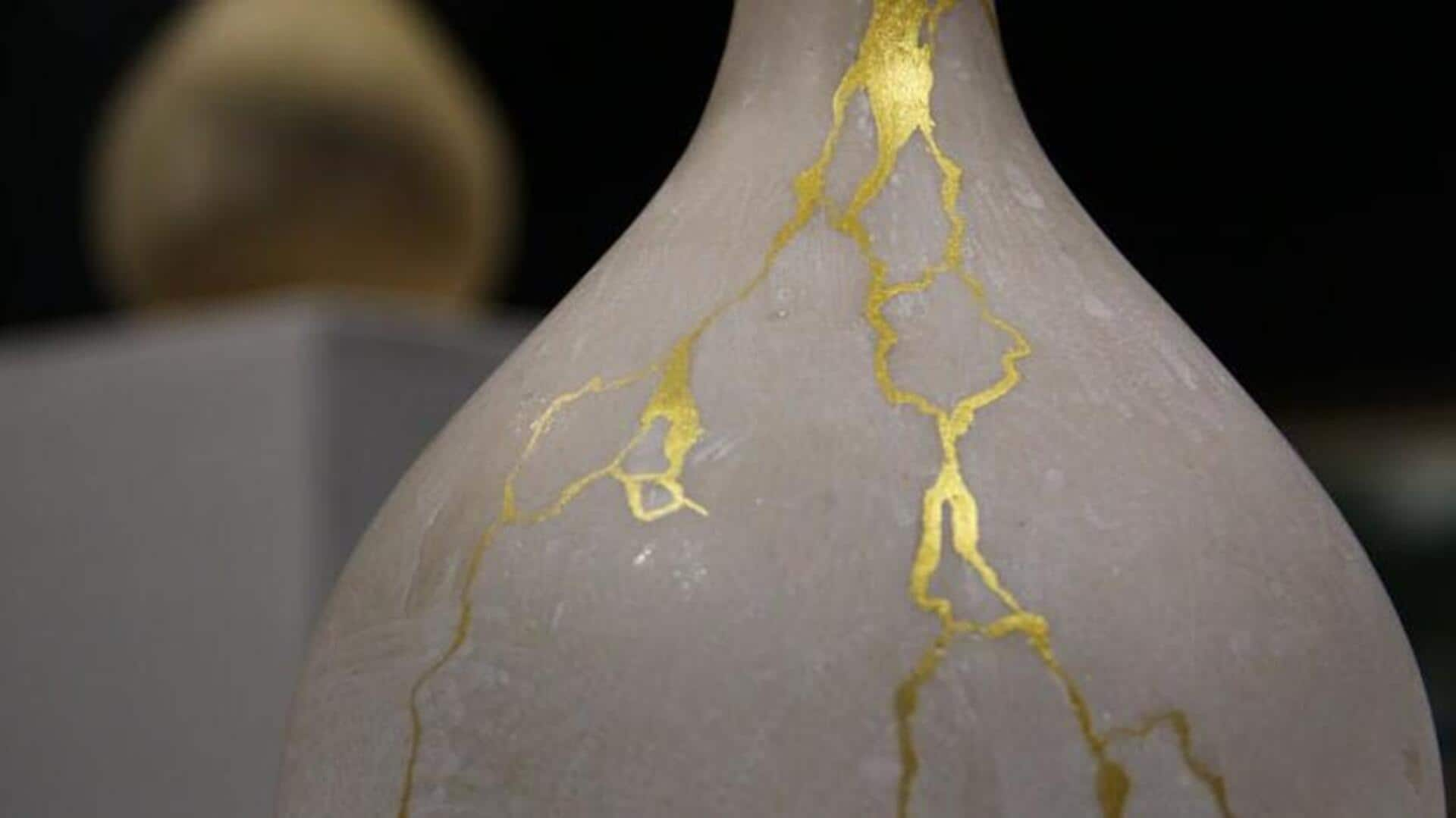
Kintsugi for emotional wellness: Finding beauty in life's cracks
What's the story
Kintsugi, the Japanese art of repairing broken pottery with gold, teaches us that embracing our imperfections is the path to wholeness.
This art form celebrates the beauty in brokenness and serves as a powerful metaphor for emotional healing.
By adopting a Kintsugi mindset, we can find strength in our scars, cultivating self-acceptance and resilience.
Acknowledgment
Recognizing your breaks
The first step in implementing a daily Kintsugi practice is recognizing and acknowledging your emotional breaks.
Just like a potter would assess the cracks in pottery, identifying your emotional wounds is key.
This requires introspection and honesty regarding past hurts, disappointments, or traumas.
It's about allowing yourself to acknowledge these experiences without judgment, recognizing that they contribute to your unique story.
Preparation
Gathering your gold
In the Japanese art of Kintsugi, broken pieces are mended with lacquer and gold powder, symbolizing that fractures are not flaws, but rather a part of the object's history.
Likewise, collecting your "gold" involves recognizing your strengths and support systems essential for emotional healing.
These can be positive relationships, personal achievements, etc. They serve as your gold, helping you mend your pieces back together, stronger than ever.
Healing
Mending with mindfulness
Healing in Kintsugi isn't rushed; it's a careful, patient process that pays attention to every detail.
Similarly, in emotional healing, it is about being mindful as you navigate your emotions.
Practices like meditation or journaling can help you remain present with your feelings without getting swept away.
This way, you learn to accept your flaws while striving for healing.
Acceptance
Celebrating scars as beauty marks
Once repaired with gold, Kintsugi items are considered more beautiful for their brokenness.
By viewing our scars as badges of resilience, we change the narrative of healing.
We honor the triumph over adversity by recognizing personal growth and newfound strength, not just the pain endured.
This mindset reshapes our healing journey, allowing us to see beauty in what was once broken.
Integration
Integrating daily practice into life
Choosing to live a daily Kintsugi practice isn't about occasional reflection; it's about weaving these principles into the fabric of everyday life decisions and interactions.
It means greeting each day with a deep awareness of one's inherent worth despite imperfections and choosing responses that align with healing rather than harm—whether it's being kinder to oneself or extending compassion towards others.